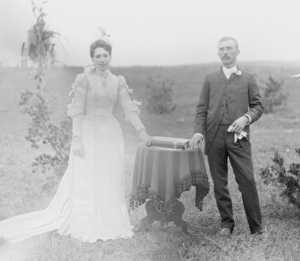Preference-oriented popularity is analyzed within very first time area having fun with an excellent limited nomination sociometric procedure
Each adolescent, his or her closest friend, and two other target peers named by the adolescent were asked to nominate up to 10 peers in their grade with whom they would most like to spend time on a Saturday night and an additional 10 peers in their grade with whom they would least like to spend time on a Saturday night. The raw number of like nominations each teen received was standardized within grade level before being added to the main data set as the primary measure of popularity following the procedure described in Coie, Dodge, and Coppotelli (1982). This procedure resulted in a sample of 72 146 teens (depending on the grade level), comprising approximately 38% of the entire student population in these grades, who provided nominations of anyone in their grade at school. Grade-based nominations were utilized rather than classroom-based nominations due to the age and classroom structure of the school that all of the participants attended. The large number of raters for each teen (each received a yes no nomination from each participating nominator in his or her grade) means that this subsample of nominators is likely to yield fairly reliable estimates of popularity for each teen (Prinstein, in press). Preliminary analyses of the 1-year test retest stability of these popularity ratings over time indicating a 1-year stability coefficient of r = .77 (p < .001)>
Observed concrete information looking to and receiving

The quality of adolescents’ connections due to their best friend are observed throughout the a supporting Decisions Activity on each other go out affairs (Allen mais aussi al., 1999). Teenagers participated in an effective 6-min communications activity and their nearest same-sex friend, during which they talked so you can your ex lover about a great problem they were which have that they might use some pointers or help about. Regular subjects included matchmaking, difficulties with co-workers otherwise siblings, increasing currency, otherwise s. These connections was indeed following coded using the Supportive Conclusion Coding Program (Allen et al., 2001), which had been based on multiple relevant expertise created by Crowell and colleagues (Crowell et al., 1998; Haynes & Fainsilber Katz, 1998; Julien et al., 1997). The degree of the adolescent’s need fundamental pointers from their buddy in addition to their friend’s provision of pointers have been coded to your bills anywhere between 0 to 4 (0 = characteristic perhaps not present, cuatro = characteristic very expose), in line with the fuel and dedication of the adolescent’s requests for simple suggestions or guidance (unlike psychological assistance) as well as the buddy’s attempts to give advice and you will/otherwise bring intends to resolve https://kissbridesdate.com/hr/blog/indijske-stranice-i-aplikacije-za-upoznavanje/ the challenge. Since these version of balances grabbed a method where in fact the teens was indeed fundamentally requesting and having very basic and you will real information (e.g., the specific actions so you can get a part-big date jobs from the shopping center), higher scores on this measure were considered mirror a family member not enough societal skills on the part of the participating adolescent. Both of these subscales have been very coordinated within both go out factors (rs = 0.82 during the Date step one and you will 0.71 from the Go out 2) and therefore had been mutual to help you yield the general dyadic size to own guidance trying to/receiving. Each telecommunications is actually easily coded since on average this new results received from the several instructed raters blind to many other investigation about studies with sophisticated reliability (T1 intraclass relationship = 0.89, T2 = 0.85).
Peer-stated violence and violence
Personal friends’ product reviews of one’s target adolescents’ degrees of violence and violence was in fact gotten within one another Date step one and you may Day 2 having fun with bills from a primary version of the infant Choices Listing (CBCL; Achenbach, 1991; Achenbach & Edelbrock, 1981; Lizotte, Chard-Wierschem, Loeber, & Harsh, 1992). This scale (originally designed for professor or parent declaration) asked family unit members to suggest how many times a number of behavioral meanings applied to the mark adolescents, towards a measure off 0 = not true in order to dos = very otherwise often genuine. The brand new violence and you may aggression subscales with this size was indeed notably certainly correlated (r = .67 T1, roentgen = .65 T2), and therefore, these people were shared towards the one size which includes 18 facts highlighting youths’ difficulties discussion rightly having peers when it comes to acting-out facing them. Decide to try issues included is actually suggest so you can anyone else, gets in battles, threatens individuals, and you can keeps a hot spirits. That it level presented a beneficial inner structure (Cronbach’s ? = .77 at the Day 1 and you may .81 at the Time 2). The fresh CBCL could have been confirmed for use having colleagues inside the earlier education hooking up peer-said externalizing choices so you’re able to connection mentality, instability in the fellow classification, and you may cognitive expectations of parents and you will co-worker (Allen ainsi que al., 2007; Antonishak, Schlatter, & Allen, 2005; Porter, 2001) together with brief setting has been proven to dependably predict delinquency much like the complete scales (Lizotte mais aussi al., 1992).


